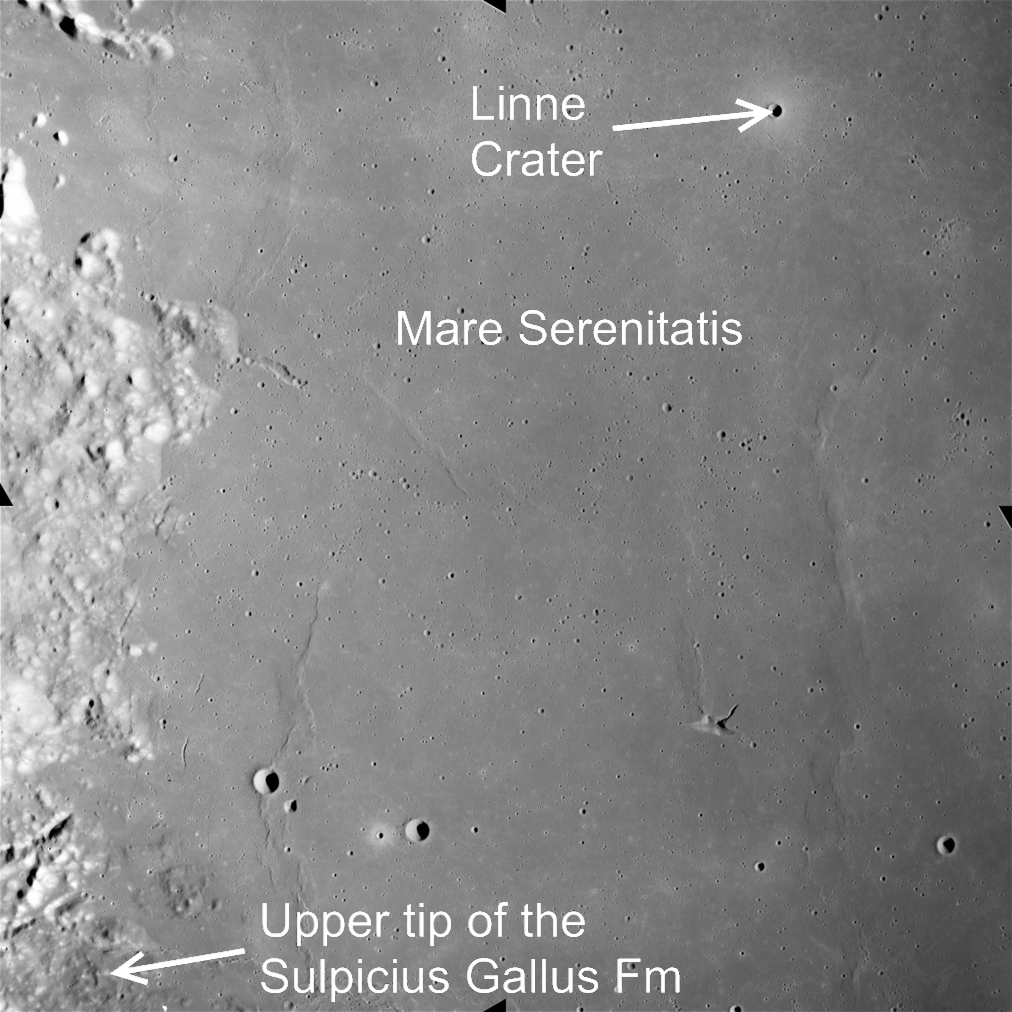
| Project Home | About the Scans | Browse Gallery | Image Map | Support Data | Resources | Ephemeris |
Featured Image - (04/29/2008)
Mare Serenitatis
Mare Serenitatis (the "Sea of Serenity") is a lunar mare. Serenitatis encompasses almost 300,000 square kilometers, and is the sixth largest of all lunar seas. We know from studies of the Apollo 17 samples that the Serenitatis basin formed about 3.89 billion years ago, during the time period known as the Nectarian epoch, which extended from 3.85 to 3.92 billion years ago. We also know from studies of the Apollo 17 samples that mare deposits which fill the Serenitatis basin were emplaced later, about 3.75 billion years ago, during the Upper Imbrian time period. Mare Serenitatis is also an example of a mascon (short for mass concentration), which is an area on the Moon that has a large positive gravitational anomaly, which in this case is probably due to the large concentrations of basaltic lava. Lunar mascons make calculating orbits for lunar spacecraft challenging, although the lunar scout missions currently orbiting or about to be launched around the Moon (including the Chinese Chang'e, Japanese Kaguya, Indian Chandrayaan-1, and the U. S. Lunar Reconnaissance Orbiter) will mitigate this problem by producing high-quality maps of the lunar gravity field.
The dark material that is just barely visible in the lower left of the image is the upper tip of what is called the Sulpicius Gallus formation. These are believed to be dark beads of glass and volcanic ash. The Sulpicius Gallus formation is one of seven Regional Dark Mantling Deposits on the lunar nearside, and therefore will be one of the most easily accessible lunar ores for future settlers. The ridges running north-south in this image were formed by subsidence and contraction of the lava flows that formed Mare Serenitatis. Linne crater in the upper right of this image is exceptionally-well defined and is a very recognizable feature during high sun conditions.
United States Astronauts Gene Cernan and Harrision Schmitt spent three days exploring the Taurus-Littrow region near the southwestern edge of Mare Serenitatis during the Apollo 17 mission in December 1972. An area north of the Apollo 17 landing site was subsequently visited by the unstaffed Soviet Luna 21 probe in January 1973.
Did you know...?
Some people believe Mare Serenitatis is one of the eyes for the Man in the Moon.
Southwest part of Mare Serenitatis. The Montes Haemus are visible on the left of the image. (Apollo Image AS15-M-0409 [NASA/JSC/Arizona State University])

|
|
Space Exploration Resources |
|
 LPI LPI
|
